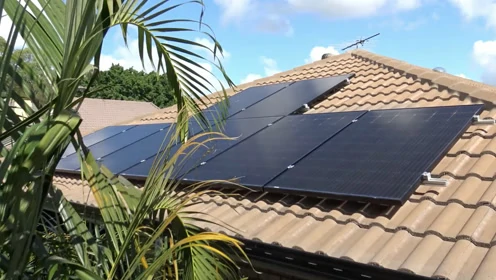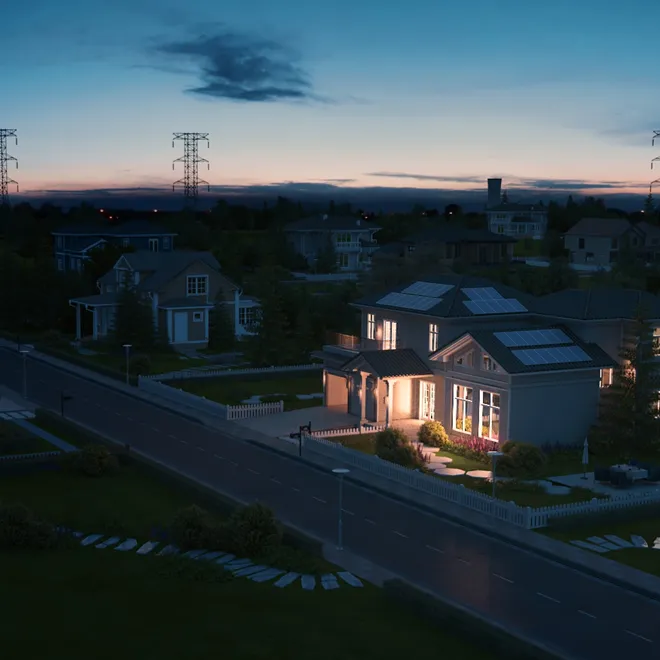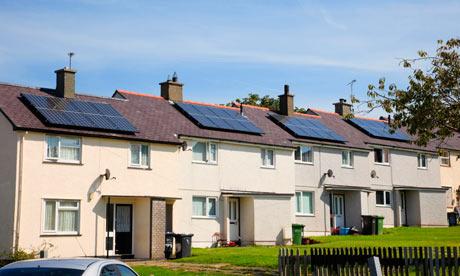As global energy demands continue to grow, more households are turning to clean energy solutions. A solar home system is a standalone photovoltaic power system that is particularly suited for remote areas or for households looking to reduce electricity bills. By harnessing renewable solar energy, solar home systems offer a sustainable way to power homes. This article will provide an in-depth overview of solar home systems, including their components, how they work, costs, and installation considerations, helping you better understand their advantages and applications.
What is a Solar Home System?
A solar home system is a self-contained photovoltaic power setup typically used to supply electricity to households, especially in remote areas without access to the grid. It converts sunlight into electricity via solar panels, powering lights, appliances, and other home devices.
What Does a Solar Home System Include?
A typical solar home system consists of the following key components:
- Solar Panels: Convert sunlight into direct current (DC) electricity.
- Battery: Stores electricity for use at night or during periods without sunlight.
- Inverter: Converts DC electricity into alternating current (AC) for household appliances.
- Charge Controller: Regulates the current flow to and from the battery, preventing overcharging or over-discharging.
How Does a Solar Home System Work?
The system works by absorbing sunlight through the solar panels, which generate DC electricity. This electricity is then stored in the battery via the charge controller. When needed, the inverter converts the stored DC electricity into AC to power household devices.
Advantages and Disadvantages of Solar Home Systems
Advantages:
- Clean Energy: Uses solar power, reducing reliance on fossil fuels.
- Cost Savings: Can significantly reduce electricity bills in the long run.
- Independent Operation: Ideal for remote areas without grid access.
Disadvantages:
- High Initial Investment: Installation costs can be high.
- Weather Dependent: Solar power generation is affected by sunlight availability, with lower output on cloudy days or during winter.
How Much Does a Solar Home System Cost?
The cost of a solar home system varies based on system size, quality, and local installation fees. Typically, a home solar system installation ranges from a few thousand to tens of thousands of dollars. Smaller systems for basic power needs cost less, while larger setups for full home power supply can be more expensive.
How Many Solar Panels are Required to Run a House?
The number of solar panels needed depends on your household’s energy consumption, the power rating of the panels, and your geographic location’s sunlight conditions. Generally, an average home may require 10-20 solar panels to meet its daily energy needs.
How Much Electricity Can a Solar Home System Generate Daily?
The daily electricity output depends on the number of panels and the sunlight received. Typically, each solar panel generates 300-500 watt-hours of electricity per day. With 10 panels, the system could generate 3-5 kilowatt-hours (kWh) daily.
Is a Permit Required to Install a Solar Home System?
In many regions, installing a solar home system requires local government permits, especially if it involves connecting to the grid. It’s important to consult local authorities before installation to ensure compliance with regulations.
Can a Solar Home System Operate Off-Grid?
Yes, a solar home system can operate completely off-grid, making it ideal for remote locations or users who prefer not to rely on the public grid. These systems store energy in batteries for use when sunlight is unavailable.
Recommended Battery Type
The LiFePO4 (Lithium Iron Phosphate) battery is recommended for solar home systems due to its high safety and durability. Compared to other battery types, LiFePO4 solar batteries offer longer lifespans and can operate across a wider temperature range. They also feature higher charging efficiency and lower self-discharge rates, making them an excellent choice for consistent power supply.
How Long Does a Solar Home System Last?
The lifespan of a solar home system depends on the quality of its components and maintenance. Solar panels typically last over 25 years, while LiFePO4 batteries have a lifespan of 10-15 years. Inverters usually last around 10 years, depending on usage. With proper maintenance, a solar home system can provide reliable power for decades.
How to Maintain a Solar Home System?
Regular maintenance is crucial for ensuring optimal performance and longevity of a solar home system. Cleaning the solar panels to ensure maximum sunlight absorption is essential. Battery health should also be monitored to avoid overcharging or deep discharging. Additionally, inspecting cables and the inverter periodically for any issues can help prevent breakdowns. Proper maintenance ensures your system will continue delivering reliable power for years.
Conclusion
A solar home system provides a clean, sustainable energy solution for households, particularly those looking to reduce electricity bills or those in remote areas. While the initial installation cost may be high, advances in solar technology and government incentives make solar home systems an increasingly viable option for many families. Understanding how the system works, its pros and cons, and installation requirements can help you make an informed decision.
Save Money, Protect Environment
PKNERGY helps you reduce your energy bills for your home solar energy storage, store your solar energy for use anytime- at night or during an outage.







